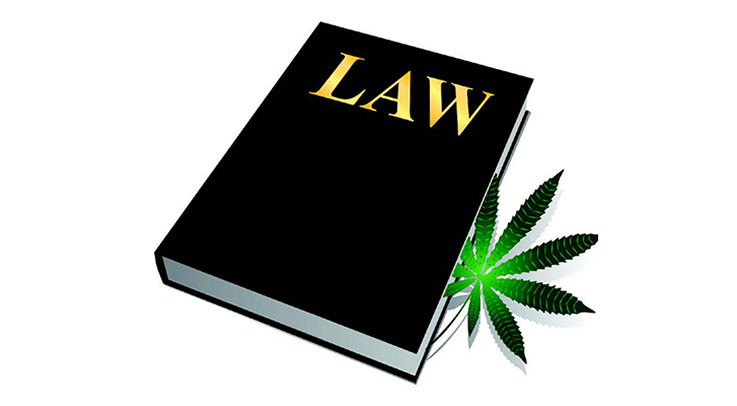
Patent Cannabis, and Trademark, Too
 Yes, that’s right, the United States Federal Government is issuing patents and trademarks for Cannabis products and services, with a few exceptions. While it’s one thing to say that it can be done, this article will help you identify and take the necessary steps to protect your Cannabis intellectual property.
Yes, that’s right, the United States Federal Government is issuing patents and trademarks for Cannabis products and services, with a few exceptions. While it’s one thing to say that it can be done, this article will help you identify and take the necessary steps to protect your Cannabis intellectual property.
Step 1: Identify Intellectual Property
As patent and trademark attorneys specializing in Cannabis technology, our first move is typically to help our clients identify which assets can be protected. Cannabis business assets generally fall into four broad categories: brands, inventions, business strategies, and artistic expressions.
Trademarks. Brands are usually expressed in words, logos, and other identifying characteristics of your product, service, or packaging. While words, images, and slogans are typically trademarked, other characteristics, such as the shape, color, texture, smell, or taste of your product, service, or packaging, can also be trademarked.
Patents. Inventions, such as newly crossed and purified strains, devices used to cultivate and consume Cannabis, mobile applications, extracts, extraction processes, treatments, designs, and other uses, can all be patented as long as they are novel, non-obvious, and have not been disclosed to the public more than one year ago.
Trade Secrets. While some business strategies are patentable, they often are best kept as a trade secret, as are customer lists, recipes, and the formulas and techniques used to grow specific strains.
Copyrights. Algorithms are also patentable; however, the code that drives Web applications is copyrightable, along with phrases, sounds, and other works of art.
Step 2: Registering Federal and State Trademarks
Selecting the correct government agency to file for a trademark is fairly straightforward and begins by asking yourself if you are selling marihuana or hemp.
Hemp. Hemp refers to products containing less than 0.3% THC by dry weight and can receive federal trademark registration. Under the Controlled Substances Act (CSA), hemp products containing fibers, seeds, and oils can be trademarked, while CBD-type strains cannot, as of now. The Charlotte’s Web Medical Access Act of 2015, which is pending congressional approval, would remove hemp from the CSA entirely. This bill would create a national market for hemp-type strains, rather than just their fibers, seeds, and oils.
Marihuana. Marihuana is a term of art contained in the CSA that is used to differentiate Cannabis products that contain greater than 0.3% THC. These THC-type strains cannot be federally trademarked since there is no U.S.-sanctioned national market for marihuana. Nevertheless, broad geographical protection can be obtained by registering your trademark in states where, at the very least, the use of medicinal Cannabis is authorized.
Common Law Trademarks. Use of a brand or logo in commerce grants a Cannabis business owner common law trademark status, without the expense of registering your mark with the federal or state government. Nonetheless, registration of a trademark offers quite a bit more protection than a common law trademark. For instance, common law trademarks protect your brand only in the limited geographical territory where you do business. If you want to expand into other regions, you could be blocked by someone who is using your same mark in a different part of the state. The broad geographical protection of a state or federal trademark is always preferred and will be useful in attracting investors.
Step 3: Patenting Inventions
Public Disclosure. If you have an invention you would like to protect, you need to establish when you first showed your invention to the public. It could have been at a Cannabis Cup, convention, or conference; it could have been featured in an article or advertisement that was posted online or printed in a magazine. If you did make such a disclosure, you have one year to file, or you may be barred from obtaining a U.S. patent. Internationally, public disclosures may prevent you from obtaining a patent in most countries.
Provisional Patent Applications. A provisional application provides Cannabis inventors an early filing date for their invention; however, it does not become a “real” patent unless a non-provisional patent application is filed within one year. This one-year period enables Cannabis inventors time to perfect their invention or test its commercial viability without incurring the expense of filing and prosecuting a non-provisional patent application. In addition, provisional applications provide inventors the right to mark their products “patent pending.” This mark provides notice to potential infringers of a product’s patent status, which will be useful if the inventor files a patent infringement lawsuit.
Non-Provisional Patent Applications. There are three types of non-provisional patent applications: utility, plant, or design applications. After filing a utility, plant, or design patent application, the United States Patent and Trademark Office (USPTO) will review the application, conduct a prior art search, and either allow the application or issue an office action. This process is called examination and can take a number of years. Once granted, patent protection lasts 20 years for utility and plant patents and 15 years for design from filing date of the application.
International Patents. The United States is not the only Cannabis marketplace available. Canada and Spain are just two examples of countries with burgeoning Cannabis industries. If you have international aspirations, you should consider filing a Patent Cooperation Treaty (PCT) patent application. A PCT application allows an inventor to file one patent application in multiple countries, cheap and easy.
Step 4: Protecting Trade Secrets
Trade Secrets. Intellectual property that cannot, or should not, be protected with patents and trademarks can be protected as trade secrets. In the Cannabis industry, strain-specific growth formulas, recipes, and customer information are often best preserved as trade secrets. If properly protected, a trade secret may last indefinitely.
Marking Documents. Under trade secret law, documents containing trade secrets should be marked as “controlled,” “confidential,” and “trade secret” and identified as confidential information in employment agreements, cooperation agreements, and non-disclosure agreements. Access to these documents should be restricted to only those individuals who are furthering the business’s purposes. Disclosures to parties outside the company, such as venture capitalists, investors, and business partners, must be preceded by a non-disclosure agreement.
Damages. Any dissemination of trade secrets to persons outside the company without authorization may result in damages for trade secret misappropriation. All employees of a business should sign confidentiality agreements that safeguard trade secrets, regardless of their employment status.
Step 5: Copyrighting Software Applications
Algorithms v. Code. While algorithms that are executed by software applications can be patented, the code itself can only be copyrighted. However, you don’t have to register your work to get copyright protection. The moment your code becomes fixed in a tangible medium, copyright protection applies for the life of the author, plus 70 years. Copyright Infringement. Registering a copyright within three months of publication maximizes the damages you can collect in an infringement suit. Once registered, you can file your lawsuit without any delay. Owners of a registered copyright may seek actual damages in an infringement lawsuit, as well as statutory damages if the court determines that the infringement was willful. Step 6: Generating Income from Your Cannabis Technology
Monetizing. Once you have trademarked your brand, patented you inventions, protected your business sensitive content with trade secrets, and copyrighted your code, you will be ready to monetize your intellectual property. This can occur in five general ways: commercial use, business valuation, licensing, buy/sale, and enforcement.
Commercial Use. If you intend to make, use, and sell your products or services, trademark certificates, patent grants, and trade secrets are key assets to establish, promote, and differentiate your business in the increasingly competitive Cannabis marketplace.
Business Valuation. Intellectual property is a business asset. If properly protected, intellectual property assets can increase the perceived or actual value of your business. As the value of your business increases, so does your ability to attract funding from investors.
Licensing. Some inventors are better innovators than entrepreneurs. For these individuals, the best course of action might be to license their technology. Licensing provides flexibility to trademark and patent holders, enabling them to generate money from their intellectual property without starting a business. A license can be exclusive or non-exclusive, and limited in geography and purpose.
Buy/Sale. Ownership rights to intellectual property are transferable. Patents, trademarks, trade secrets, and copyrights can all be bought and sold. For instance, Cannabis Sativa, Inc. recently purchased a pending patent application for a medicinal plant strain.
Enforcement. If a competitor is making, using, or selling your products, services, or brand without your permission and refuses to stop, you must file an infringement lawsuit to prevent the loss of your rights. If you are successful in your lawsuit, you will be able to recover actual damages and, possibly, statutory damages.
Disclaimer
These materials are provided for informational purposes only and shall not be construed as legal advice and do not establish the basis of an attorney-client relationship. Please be aware that possessing, using, distributing, transporting, and selling marijuana-type Cannabis are all federal crimes, and the information we provide is not intended to assist you in violating federal law nor will they in any way assist you in complying with federal law. Hanika|Marshall LLP (H|M) advises that you consult an intellectual property attorney about your particular patent, trademark, and trade secret needs, as each case requires particular attention to details that cannot be conveyed in this publication.









